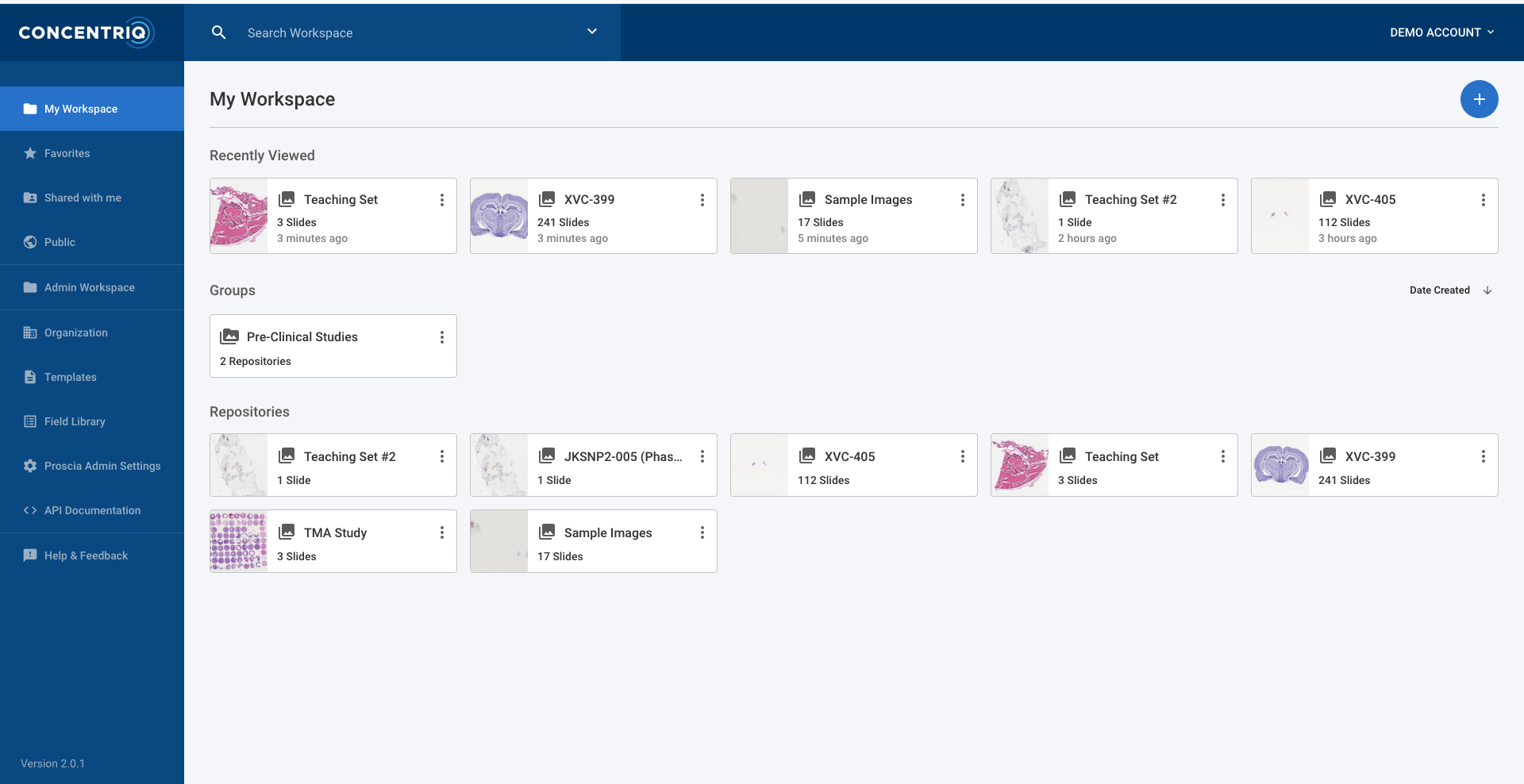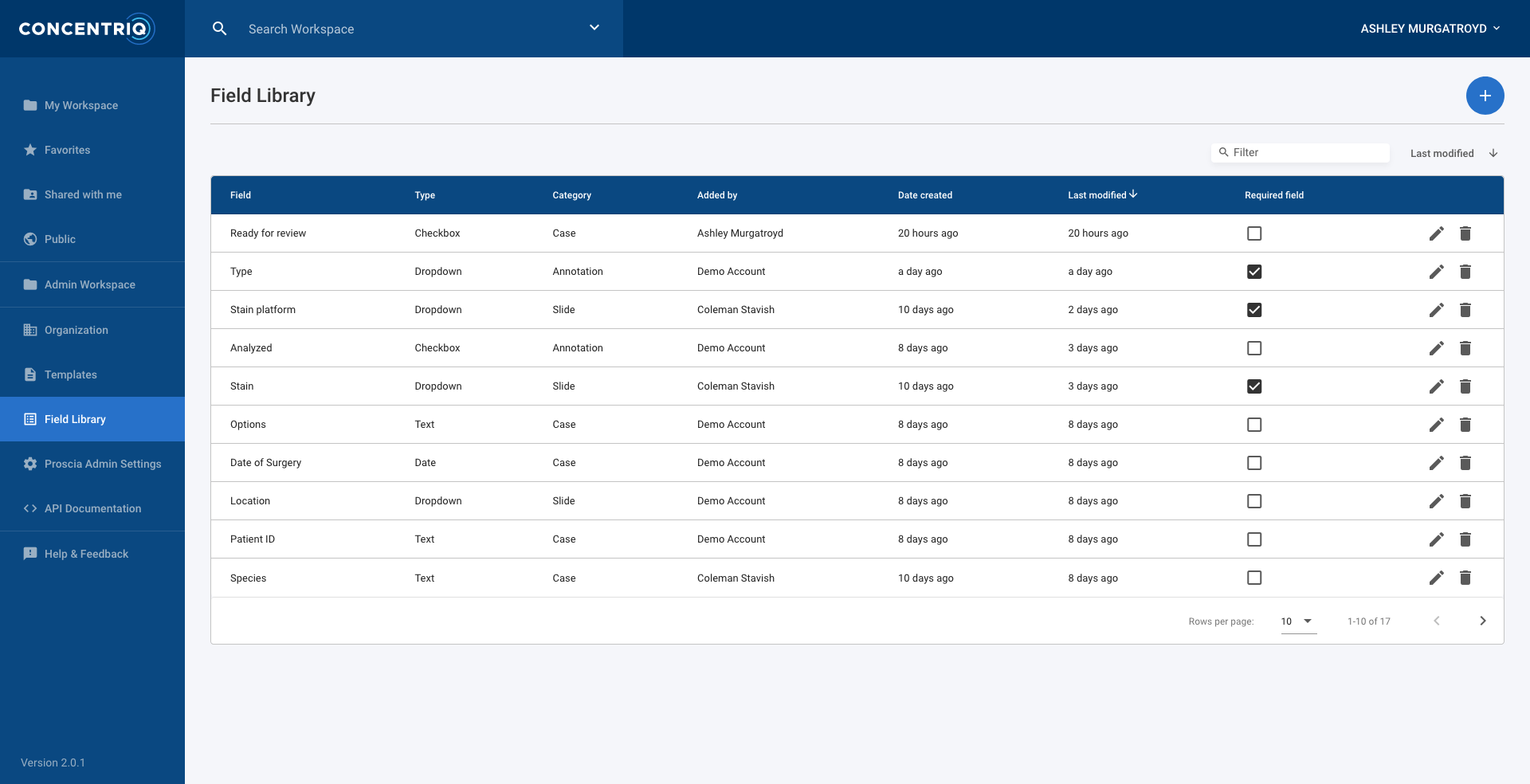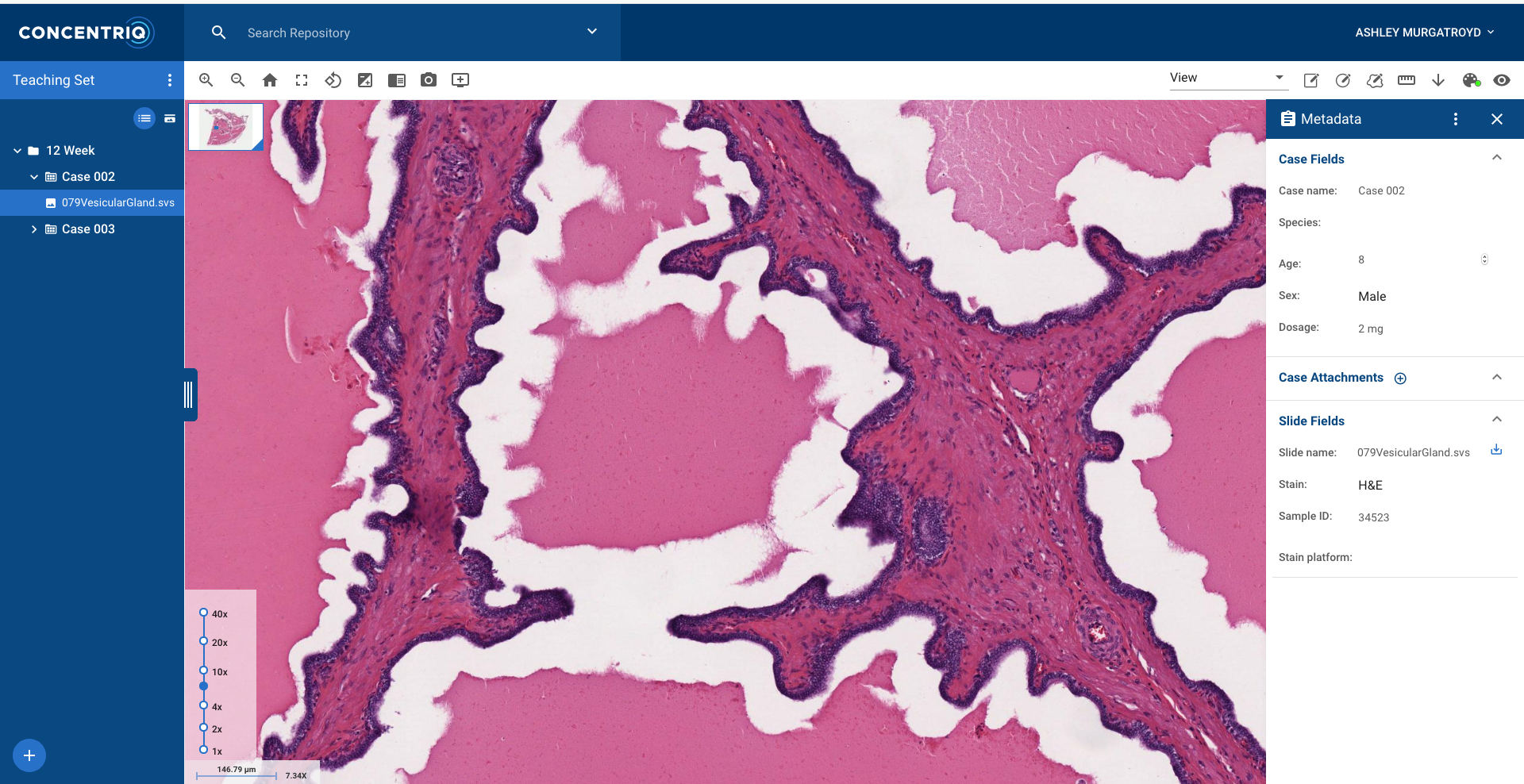Updates to Concentriq drive consistency and efficiency across the launch and management of concurrent studies involving millions of images
While life sciences organizations have been on the forefront of digital pathology adoption, the transition to digital has introduced a new set of complexities – including managing a massive number of images and associated data.
The Fall 2019 release of Concentriq, Proscia’s flagship digital pathology platform, gives pharmaceutical, biotechnology, and contract research organizations (CROs) the features they need to make digital pathology a critical component of how enterprise-scale research programs are initiated and conducted. It includes powerful functionality that accelerates the launch and management of multi-site studies involving millions – yes, millions – of images all while putting new control into the hands of IT administrators and project coordinators.
Keep reading to learn more about some of the key updates.
Concentriq Workspaces for improved usability

Concentriq has been completely redesigned to make it easier for you to access your data. Most notably, we’ve introduced Concentriq Workspaces, which centralize all of your related pathology studies and data in a single location and allow you to carry out common actions. Here you’ll find repositories and repository groups, which are collections of images and associated metadata. Information is also intuitively organized; views of recently accessed repositories and the ability to sort and filter makes it effortless to find exactly what you need.
Within each repository, users can now view images in a condensed format or expand them to reveal image previews. Images can still be organized into unlimited user-defined folders and folder hierarchies. The metadata panel, which houses all of the repository’s case and image-related data, has been redesigned with collapsible information categories, enabling you to find and focus on the data you need without distraction.
All of the above was done to prime Concentriq for the new tools and functionality that are being introduced in this release.
Data field types to drive standardization
While Concentriq already enables users to create an unlimited number of metadata fields for images, this functionality has been enhanced, as you can now configure metadata fields as a specific type: dropdown, number, date, checkbox, or free-text. When dropdown is selected, you can enter a defined list of options to be included in the dropdown menu. This helps your organization to standardize data formats, bringing structure to your data and making search and analysis more efficient.
Field libraries to encourage consistency across your organization

Implementing data field types has enabled us to introduce the field library. Admin users now have the ability to create a library of standard fields from which members of the organization can choose when setting up their repositories. Think of the field library as a predefined menu that starts to standardize how various teams put studies together. Within the field library, admin users have the ability to create new fields, edit fields, and mark fields as required (i.e., fields that cannot be edited or removed from repositories). The field library allows admins to define a standard way of collecting information and also helps to encourage the collection of critical data points to help the organization build robust data assets.
Templated projects to accelerate project launch and make digital pathology scalable across your team

To build upon the new field library, this release also includes templated projects. As your team starts up a new project, it can now select from an existing template to ensure the data that you’re collecting is appropriate, comprehensive, and consistent for the type of project you’re conducting. Templates provide a data collection framework that can be applied to repositories and repurposed over and over again.
Users can create data templates by adding fields from the field library for each data category: case, slide, and annotation. Once created, templates can be shared with the organization or kept private. Additionally, admin users can designate a template as default so that each time a user creates a repository, the default template is suggested. Once a template is selected, the repository is created, and all of the fields that were configured in the template are automatically set up in the repository for users to begin data entry.
Templates are an additional way to ensure standard, consistent data collection across the organization. When paired with automatic upload of images and mass metadata import, getting studies up and running has never been easier.
The industry’s best global search, with improvements that make it a must-have for companies with a big data focus
Standardization and consistency enable organizations to efficiently search and analyze their data. To help our users do this, we have expanded our existing search functionality so that it can be performed globally. Now, you can search for anything – from the name of a folder to a specific image analysis score hidden in a metadata field – across the entire organization. When global search is performed, results are returned from the repository-level all the way down to individual images. Shortcuts to frequently used actions for each search result are available right within the same page, and a variety of sort options makes it even easier to find exactly what you’re looking for. These expansions of global search now make it possible to interrogate and utilize all of your organization’s pathology data with the click of a mouse.
Overall, these features empower large organizations to better manage and leverage pathology data for enterprise-scale research. In summary, the Fall 2019 release of Concentriq helps research organizations of any size to:
- Efficiently view all related pathology studies and data in a single Concentriq Workspace
- Leverage field libraries and templated projects to get studies up and running faster and drive consistency across multi-site studies
- Standardize data collection to quickly find what you’re looking for with global search
- Better utilize all of the pathology data collected throughout your programs, projects, and studies
Ready to see Concentriq in action? Check out our teaser video below, and then contact us to schedule a demo and get started on the next step in your digital pathology journey.
Finally, you can also learn more about building a scalable digital pathology ecosystem for life sciences R&D by registering for our upcoming webinars. R&D project managers, researchers, and scientists will want to tune into “Plan And Execute Studies With Whole Slide Imaging” on November 12 at 12PM ET. IT and operations teams will want to attend “Overcoming the Demands of Whole Slide Imaging on IT Operations” on November 19 at 12PM ET.
